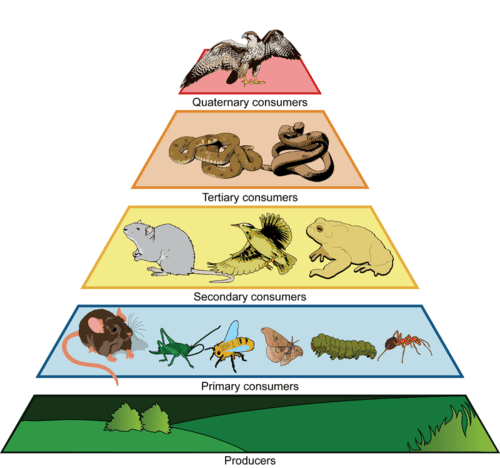Formula for the predator-prey law.
y = cx^k
The ways in which the researchers measured and collected their data. There are 4 of them, NAME 2.
Within web-scaling
Across web-scaling
Predator traits
Regression Method
Main purpose for this study.
Understand the predator-prey relationships in different ecosystems at a more complex food web.
Ecology
The study of relationships between organisms and their environment.
The journal this article was published in.
Nature or Nature Communications
The hypothesis of this article.
Implicit, a sub-linear relationship between prey and predator biomasses.
The 3 ecosystem types for this study.
Freshwater (streams)
Marine (rocky pools)
Terrestrial (soils)
True or False: Predator biomass is maintained in proportion to prey biomass
True
Sub-Linear
The ratio between two variables are ALMOST linear.
The year(s) this article was received and published
Published: 2022
Provide an example of predator biomass and prey biomass in any given territory.
Example: Predators: lions, hyena, alligators
Prey: buffalo, antelope, deer
The reason why predator generality and vulnerability were not included in the statistical models.
They were too highly correlated.
Based on class discussion, this word could and should be replaced with "limitations"
Opportunities
Trophic Structure or Energy Pyramid
This literature is written and known as a _________ journal article
Primary
These type of consumers increase their energy intake more quickly because of their ability to use several resources.
Omnivores
PPmR increased with predator omnivory in this ecosystem.
Of the 3 questions posed for this research, this one remained unknown.
Does the predator and prey biomass scale with and across complex food webs have a general power-law that holds across levels of biological organization.
Example or definition of density-dependent.
Any biological factor that has affects the population of living things.
The audience this article is reaching out to.
General Public
Ecologists, field researchers
Explanation of the difference between Within web scales and Across web scales
Within: Focus is more on the individual predator and their web chain.
Across: Focus is on group of predators and their multiple sources of energy.
prey density
Explanation of the 3/4 power scaling relationship.
3-fold increase in predator biomass, there is a 5-fold increase in prey biomass.
The difference between biomass and body mass
Biomass: Total mass or weight of organisms in an area.
Body Mass: Individual weight
Name of ONE of the authors in this article.
Daniel M. Perkins , Ian A. Hatton , Benoit Gauzens Andrew D. Barnes , David Ott , Benjamin Rosenbaum , Catarina Vinagre & Ulrich Brose
